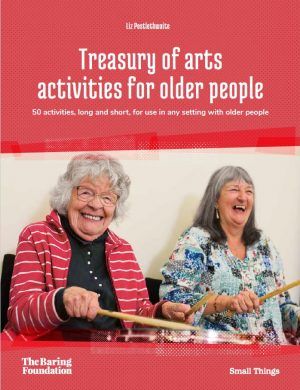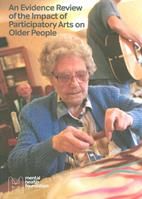
There is a rapidly expanding literature on ageing and how the world is changing as a consequence. Several recent high-profile additions I have felt to be rather lightweight (no names, not pack drill!). This has made me ask myself which books I have really valued regarding ageing and sometimes arts and later life.
No creative ageing bookshelf should be without The Long History of Old Age (2005) edited by Pat Thane. A series of historians contribute essays (well-illustrated in the Thames and Hudson publication), starting in Ancient Greece and Rome and ending in the Twentieth Century. It is a fascinating account of a neglected aspect of social history, only marred by being almost exclusively focussed on Europe and North America.
A neglected classic that I would very much recommend is The View in Winter: Reflections on Old Age (1979) by Ronald Blythe. It is a sequel to his much better known Akenfield and interviews people form the same village on their thoughts on getting old. It is a gentle, lyrical book that focusses on the patterns of life from a rural perspective.
I love How to Age (2014) by Anne Karpf and published in The School of Life series. Her inspiration appears to be the Grey Panthers in America, an intergenerational, anti-ageist campaigning group. In a witty, engaging style, overflowing with examples from around the world and wonderful quotations, she challenges the socially constructed taboo of ageing.
The great Diana Athill died recently at the age of 101 in the care home which she had championed, in contrast to so many people, as a good option for her old age. She was a legendary literary editor who wrote some fiction but mainly a series of fascinating essays and memoirs. Somewhere Towards the End is a funny, unflinching view of the reality of being in her nineties, both her views of physical decline but also continued love of life.
A superb recent addition to this canon is What Dementia Teaches Us About Love (2018) by Nicci Gerrard, a novelist and journalist. Based on her experience of her father’s hospital stays with dementia she has been campaigning for carers to have the same rights to stay overnight as parents would. Her new book looks at the process of living and dying with dementia and its wider effects on family and friends. It is a profound meditation on what makes life meaningful. It is based on many interviews but also an unparalleled examination of the burgeoning literature on dementia.
Creative ageing is one aspect of the way in which Britain and the world are ageing. If you need to look at the facts and figures, probably the two best sources are from the Centre for Ageing Better, The State of Ageing in 2019: Adding Life to our Years and from the UN, The World Population Ageing Report 2017.
The Baring Foundation has published 34 reports so far as well as a number of other resources. I hope that they have all served a purpose, but I notice that an early publication, An Evidence Review of the Impact of Participatory Arts on Older People by the Mental Health Foundation in 2011 continues to be referred to frequently as an authoritative account. In a quite different register, Kate Organ’s After You Are Two (2013) is a wise and searching look at arts practice from the perspective of a deeply experienced arts professional. Winter Fires (2012) by François Matarasso (who later became a Baring Foundation trustee) is part of his Regular Marvels series. It is a lovely and uplifting book, based on a series of conversations with artists of all kinds. It is also beautifully illustrated with portraits by Mik Godley. Finally, I hope that all of you have a copy of the Treasury of Arts Activities for Older People by Liz Postlethwaite, a skilfully curated, crowd sourced gem of a collection.
We have a series of publications planned in the forthcoming months, including a look at creative ageing around the world by me, a collection of case studies on diversity and a study of the last decade of creative ageing by Dr Rebecca Gordon-Nesbitt from King’s College London. Lastly we have commissioned a series of interviews with a diverse set of artists, some famous, some less well known and some of whom have come to the arts only recently through projects we have funded. We hope that this will be published next year by an internationally renowned publisher – watch this space!
And the book that I am ashamed to admit that I haven’t read yet? As usual Simone de Beauvoir got there first and her 1970 landmark publication (and tome) The Coming Age (also translated as Old Age) roved the centuries and the world to look at how attitudes to ageing had been socially constructed and the damage this has created.
What is on your creative ageing bookshelf?

